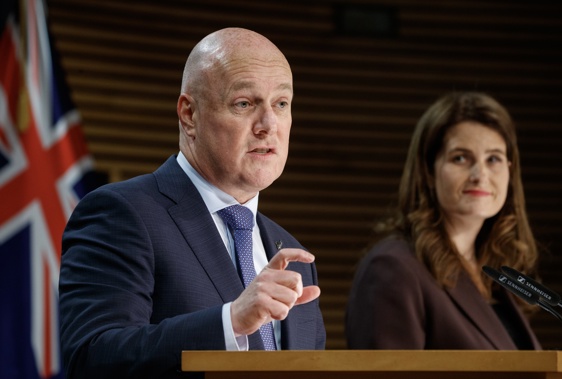
The new Government has lifted the requirement for “regulatory impact analyses” in instances where it will “solely repeal legislation” in its first 100 days. And the quality assurance criteria for these pieces of advice, offered by officials to ministers, will be diminished elsewhere.
It’s caused a modest to-do because it lightens official guidance to the Cabinet on the likely effects of the changes that the Government has promised to pursue immediately – the likes of repealing the previous government’s new laws on three waters, fair pay agreements, and smoking and tobacco. (It’s also a to-do because the Treasury paper outlining the changes was leaked to the NZ Herald).
For the most part, the affected plans were well canvassed and discussed during the election campaign. Tobacco law is the exception, though both the National and Act parties opposed the bill in its passage through parliament last year.
National argues that it needs to act quickly and do as it promised in the election campaign, and regulatory impact analyses of these changes would take time and consume officials’ focus when it could be better deployed elsewhere.
Former Prime Minister and Labour Leader Chris Hipkins was critical of the suspension. Regulatory scrutiny, he said, “is an important part of the policy process” and choosing not to receive it should only be done in specific circumstances, for example an emergency response.
History, however, shows that Hipkins’ preference for scrutiny over speed is very lately acquired.
The Labour-led coalition government, as Hipkins suggested, suspended the requirement for regulatory impact analyses (RIA), also known as regulatory impact statements (RIS) in 2020 in the midst of the pandemic.
But other examples abound. Labour ditched the requirement just last year, when it rushed in fuel tax reductions and gave officials at the New Zealand Transport Agency less than 24 hours to write up policy.
The Cabinet Paper brought on March 14, 2022, to approve the measures noted: “Cabinet’s impact analysis requirements apply to the proposals in this paper to reduce excise duty and road user charges and to support the uptake of public transport. However, there is no accompanying Regulatory Impact Statement, and the Treasury has not exempted the proposal from the impact analysis requirements. Therefore, it does not meet Cabinet’s requirements for regulatory proposals.”
It’s worth noting that the total cost of the fuel tax reductions, and the other measures contained in this package, ultimately topped $2b. When it was eventually produced, the official advice was that the spending was unnecessarily high (given the stated goal) and untargeted.
Labour also ignored the RIA requirement when it hastily hatched another piece of cost-of-living relief, a “cost of living payment”.
In April 2022, the Cabinet authorised a $350 payment, to be doled out in three instalments, to a large swath of low- and middle-income earners – the total cost was nearly $1b. Official documents note that in this instance too, the requirement for an RIA applied, but was waived.

In short, the regulatory analysis couldn’t be undertaken because the Government was in a hurry to get money out the door, as it said at the time, to help Kiwis tackle rising living costs, and almost undoubtedly too because polls had begun to tell Labour that its record popularity was ebbing fast in the face of galloping inflation.
So politicians of all stripes, it seems, lose their appetite for official advice when they’re in a hurry and, perhaps more particularly, when they’ve already decided on a course of action.
But RIAs are still useful to anyone interested in the costs and benefits of government changes.
Recently, Finance Minister Nicola Willis voiced her surprise and disappointment over the “fiscal cliffs” left behind by the previous Government: last week she cited the case of the new water services regulators, for which funding dries up next year.
Willis’ gripe is that the previous Government has, in many instances, provided only temporary funding for plans that are more permanent: a case in point is the Commerce Commission, which was anticipated as a new water services regulator as part of the previous Government’s three waters reforms (the National-led coalition also plans to use the ComCom to regulate water services).
Labour MP Kieran McAnulty, former Minister for Local Government, batted Willis’ criticism away; he said the ComCom’s budget hole is a consequence of the new Government’s plan to scrap the water reforms.
Willis could have avoided surprise, and McAnulty could have avoided misleading his audience, if either had absorbed the contents of officials’ RIS of May 9 – specifically concerning McAnulty’s “refocus” of the water reform programme.
The document describes the consequences of the changes, especially the increase from four new water services entities (WSEs) to 10, and the delay to their establishment by up to two years.
The RIS – which only partially met the Treasury’s quality assurance criteria – noted that the implementation delay was likely to result in a loss of levy revenue of some $30m (between July 1, 2024, and July 1, 2026) for the drinking water regulator Taumata Arowai, and, over the same period, of $17m to $20m per year “for establishing and operating a price-quality economic regulation regime”, ie the ComCom’s water regulation capacity.
The document has plenty of holes and signs of haste, but it’s clear that the loss of “projected levy funds” would have looked like a funding cliff come next year, even for Labour’s plans. It is, after all, tough to charge a fee from water entities that don’t yet exist.
Take your Radio, Podcasts and Music with you









